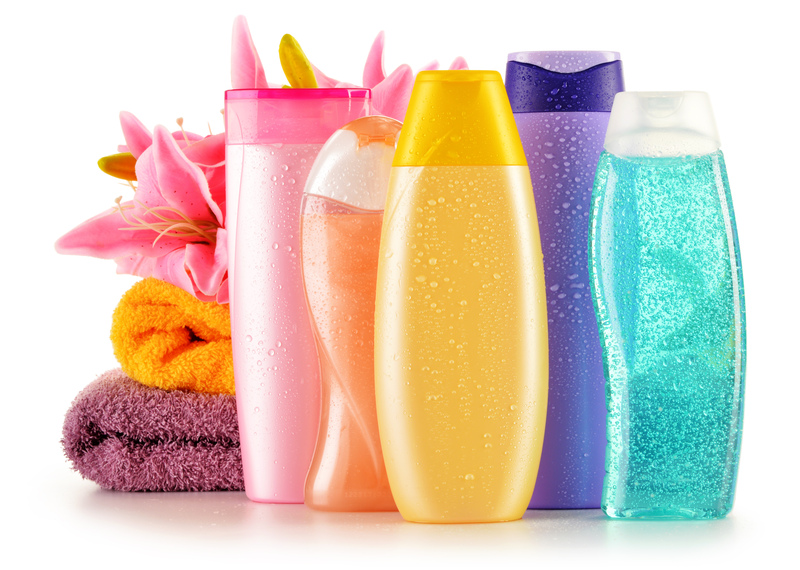Master the Art of Removing Damp Smell
Posted on 13/09/2025
Master the Art of Removing Damp Smell: The Ultimate Guide
Have you ever walked into a room and been hit by a musty, unpleasant odor that just won't go away? That's the dreaded damp smell. Not only is it uncomfortable, but it signals deeper issues like excess moisture, mold growth, and poor air quality. In this comprehensive, SEO-friendly guide, you'll master the art of removing damp smell from your home, ensuring every corner feels fresh and inviting.
Understanding the Source of Damp Odors
Before you can successfully eliminate damp odors, it's crucial to identify where they're coming from. Understanding the root cause will prevent the smell from returning and protect your home's structural integrity.
Common Causes of Musty and Damp Smells
- Water leaks: Pipes, roofs, and appliances can develop leaks that saturate walls, floors, and ceilings.
- Poor ventilation: Insufficient airflow traps moisture, especially in bathrooms, kitchens, and basements.
- Condensation: Surfaces that are colder than the air around them cause water vapor to condense, encouraging mold growth.
- Rising damp: Groundwater can seep up through walls if a proper damp-proof course is missing or broken.
- Mold and mildew: These organisms thrive in moist, dark environments and produce strong, persistent odors.
Recognizing Damp Smell Hotspots
*Damp odors* are particularly common in these areas:
- Cellars and basements
- Cupboards and wardrobes
- Bathrooms and laundry rooms
- Behind wallpaper and under carpets
Spotting and addressing these sources early is key to mastering the art of removing damp smell.

Steps to Remove Damp Smell from Your Home
Ready to banish that musty odor for good? Follow these step-by-step instructions to freshen up your living space and prevent damp smells from returning.
1. Locate and Fix the Moisture Source
- Inspect your home: Check walls, ceilings, floors, and hidden corners for signs of water damage, leaks, or condensation.
- Address leaks: Repair dripping pipes, faulty gutters, cracked tiles, and appliances.
- Improve ventilation: Open windows, use extractor fans, and consider installing air bricks or vents.
- Seal gaps: Block up holes in basements, walls, or roofs to prevent moisture from entering.
Tip: A dehumidifier is a fantastic tool for quickly reducing moisture levels indoors.
2. Deep Clean Affected Areas
Damp smells cling to surfaces, fabrics, and furnishings. Here's how to thoroughly clean:
- Wash fabrics: Launder curtains, carpets, bedding, and upholstery with odor-neutralizing detergent.
- Scrub hard surfaces: Clean walls, floors, and tiles with water and mild detergent. For moldy patches, use a bleach solution (1 part bleach to 4 parts water).
- Steam clean: Tiles and grout often trap lingering musty odors--steam cleaning can remove these effectively.
- Avoid masking odors: Air fresheners only cover up the problem. Address the cause directly for lasting results.
3. Use Odor Absorbers and Neutralizers
Some household products are excellent at soaking up damp smells:
- Baking soda: Sprinkle on carpets and soft furnishings, let sit for a few hours, then vacuum.
- Activated charcoal: Place bags or bowls in affected rooms, cupboards, or wardrobes.
- White vinegar: Keep open bowls in corners or cabinets to neutralize musty odors.
- Commercial odor absorbers: Products like DampRid are specially designed to eliminate damp smells quickly.
4. Refresh and Maintain Indoor Air Quality
- Aerate: Open windows daily for at least 15-30 minutes to exchange stale indoor air for fresh outside air.
- Use houseplants: Certain plants, like peace lilies and spider plants, naturally purify and freshen the air.
- Ventilate hidden areas: Occasionally air out little-used spaces, cabinets, and closets.
- Replace air filters: In homes with HVAC systems, change filters regularly to prevent mold spores from recirculating.
5. Prevent Mold Regrowth
Prevention is the key to mastering the art of removing damp smell permanently. After cleaning, make your home unfriendly to mold:
- Maintain low humidity: Keep indoor relative humidity below 60% (ideally 30-50%).
- Fix leaks promptly: Address spills and water damage immediately.
- Declutter: Piles of clothes or boxes can trap moisture and hide mold.
- Use moisture barriers: In basements and crawlspaces, vapor barriers can help keep the damp at bay.
Targeted Solutions for Specific Areas
How to Remove Damp Smell from Carpets and Rugs
- Baking Soda Method: Generously sprinkle baking soda, leave overnight, then vacuum thoroughly.
- Vinegar and Water: Mist the area with a solution of equal parts white vinegar and water (test on an inconspicuous spot first).
- Professional cleaning: Stubborn odors may require steam cleaning or professional carpet cleaning services.
Banishing Musty Odors from Wardrobes and Closets
- Remove everything: Air out clothes in sunlight to kill mold spores and remove odors.
- Clean interiors: Wipe surfaces with a white vinegar and water solution.
- Odor absorbers: Place activated charcoal bags or open boxes of baking soda inside.
- Keep the doors open: Let air circulate regularly.
Freshening Up Damp Basements
- Run a dehumidifier continuously until humidity stabilizes.
- Seal walls and floors with moisture-resistant paint or coatings.
- Check for leaks: Fix any plumbing issues or cracks in the foundation.
- Install sump pumps: These help evacuate water and prevent buildup.
Getting Rid of Damp Smell from Soft Furnishings
- Steam clean sofas and armchairs.
- Sun dry cushions, pillows, and blankets.
- Use fabric sprays that contain odor-neutralizing agents.
DIY Remedies for Damp Smell Removal
Harness the power of natural ingredients to remove damp odors safely and effectively:
- Lemon and salt: Mix juice and salt into a paste, apply to surfaces, leave for 30 minutes, then rinse.
- Coffee grounds: Place dried coffee grounds in bowls to absorb smells in small spaces.
- Essential oils: Diffuse lavender, eucalyptus, or tea tree oil to mask and reduce musty scents.
When to Call a Professional
While many damp odor removal tasks are simple enough for a DIY enthusiast, certain scenarios require expert attention:
- Persistent, unexplained smells that resist cleaning and fresh air.
- Visible mold infestations covering more than 1 square meter.
- Flood damage or suspected structural damp affecting walls or foundations.
- Medical symptoms: If mold or mildew is causing respiratory issues, dizziness, or allergies, professional remediation is essential.
Tips for Keeping Your Home Damp-Free and Fresh
- Routine inspections: Check for leaks and damp spots every season.
- Regularly clean and declutter storage areas.
- Control humidity: Use exhaust fans, especially in bathrooms and kitchens.
- Weatherproof: Ensure doors and windows are sealed to keep rain out.
- Position furniture away from exterior walls to encourage airflow.

Frequently Asked Questions about Damp Smell Removal
Can air fresheners eliminate damp odors?
No. Air fresheners only mask the smell temporarily. You must address the underlying moisture to permanently remove damp smells.
Is it safe to use bleach for mold and mildew?
Yes, for non-porous surfaces. Always ventilate the area, wear gloves and a mask, and never mix bleach with other cleaning agents. For porous surfaces, consult a specialist.
How does a dehumidifier help?
A dehumidifier pulls excess moisture from the air, making it harder for mold and mildew to grow and reducing musty odors throughout the house.
Conclusion: Enjoy a Fresh, Odor-Free Home
Mastering the art of removing damp smell not only improves your home's comfort but also safeguards your health and property value. By identifying moisture sources, cleaning thoroughly, and preventing future issues, you'll create a vibrant, welcoming atmosphere in every room.
Take control today: Inspect, clean, ventilate, and enjoy the renewed freshness of your living space!
If you've found this guide helpful, bookmark it and share it with anyone battling that stubborn musty odor. For persistent problems, don't hesitate to seek professional help--your home will thank you!



